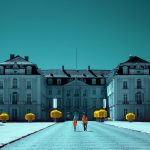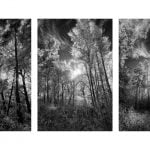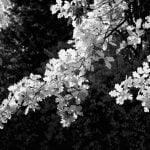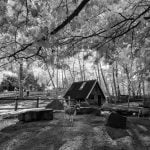Like so many others, Darius Ortmann fell in love with infrared photography. However, it was a long road from the decision to have an unused camera converted to the first good pictures and there was a lot to learn. Looking back, he talks about his experiences today:
Like many other photographers, I still have old cameras that have lost so much value in the meantime that it is hardly worth offering them on the second-hand market. My Fujifilm X-E1 has been living a sad and undeserved life in my cupboard. Apart from the autofocus (which isn't that bad), it's actually an excellent camera. I like to experiment with photography and so I came up with the idea of giving my camera a second lease of life by having it converted to infrared. I hadn't tried infrared yet. If it doesn't work out or if I realize that it's not my thing after all, then I've only "lost" the money for the conversion. I haven't used the camera anyway. The camera is compact and light, and you can just take it with you.
Contact with IRreCams was easy and informal. The conversion was quick and uncomplicated. This is the kind of service you would wish for from many a large company with the appropriate resources. My camera now had a 700 nm filter installed. However, the results after the first walk were sobering. I realized that I first had to gain experience, just like when I started photographing in black and white. The difference with black and white photography is that you can't rely on colors alone. A green T-shirt can look completely different in infrared than the green leaf of a plant.
So I set off to learn and gain experience. You quickly realize that the desired infrared effect is best achieved when the sun is shining.
Clouds in the sky are OK if the sun comes through unhindered. A blue sky also looks much more interesting in infrared than a cloudy one. And this is how I work
Step by step and learn. Even with "normal" cameras, I like to take photos in the late afternoon or evening when the sun is low and fills the world with warm light and beautiful shadows. And then I prefer to take photos against the sun. I have selected a high-contrast film simulation in my camera (black and white with red filter, contrast increased, DR100) so that I can see how the situation will look in the viewfinder before the shutter is released.
The JPGs that result are quite acceptable. Nevertheless, I convert the RAWs manually on the PC, as this gives me more control over the process. I don't always stick to the usual infrared conversion (white leaves, dark blue sky), but also experiment with different colors. Since nobody can see infrared directly, nobody can say whether my interpretation is "wrong". But that's not the point. I do not intend to depict reality, which is not possible with conventional photography. I find it exciting to show a parallel world that is invisible to us, a world that is very similar to our own, but which somehow seems surreal and strange thanks to the different colors.
The more I use the camera, the more interesting I find the pictures that come out in the end. It's a great way to rediscover familiar motifs.
Text and pictures are ©Darius Ortmann. Many more of his IR photos can be found on his Infrared-blog or on his website. He also recently published a very readable IR article on the blog fokussiert.com.







